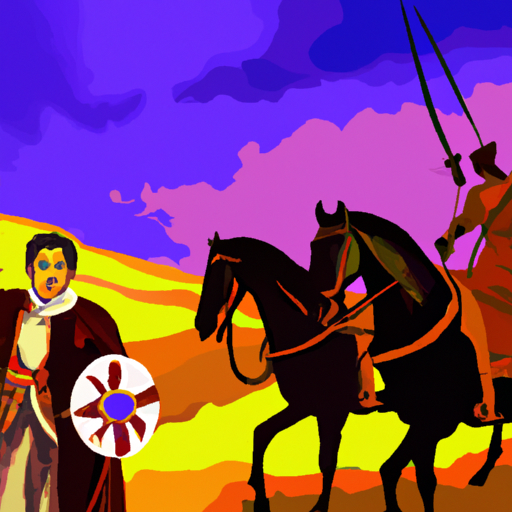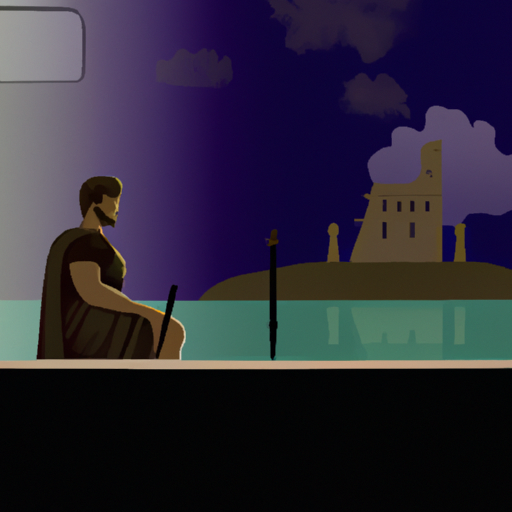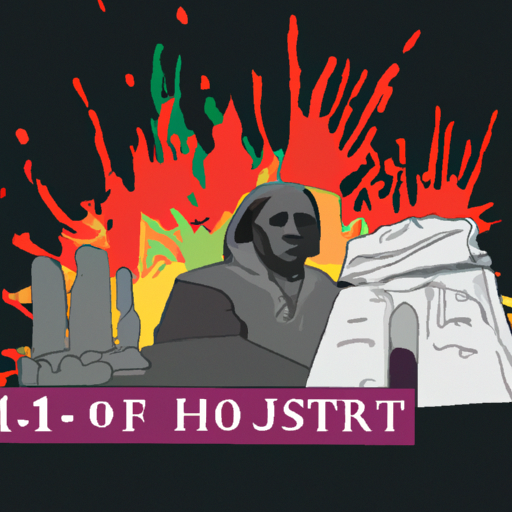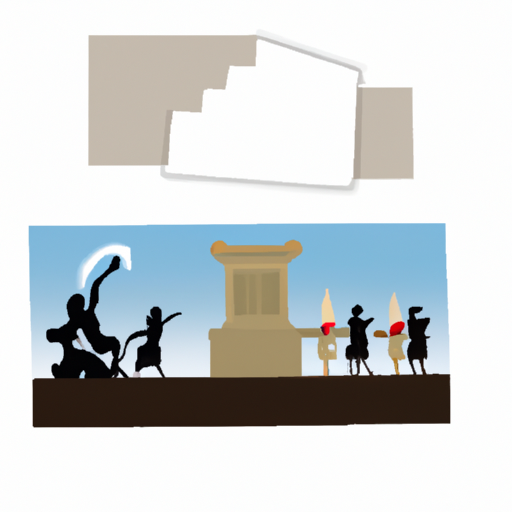Exploring the History of Religions in Ancient Mesopotamia
Unlock the enigma of antiquity and uncover the secrets of Mesopotamia! Delve into its past, explore its ancient religions and uncover the mysteries that have been shrouded in time. Uncover the forgotten history of this land and discover all that it has to offer.

Enveloped in a shroud of antiquity, the land of Mesopotamia has been called the cradle of civilization. From the ancient Sumerian city-states to the powerful Assyrian and Babylonian Empires, this region has witnessed some of humanity’s most remarkable accomplishments. Uncovering its past can offer us an understanding of how our world has changed over time.
The Sumerians were among the first to inhabit Mesopotamia around 4500 BC, introducing a complex writing system known as cuneiform which was used to inscribe their laws, beliefs and literature on clay tablets. The Akkadian Empire soon followed and became one of the most influential forces in the ancient world. During this period, Mesopotamian religion flourished with many gods being worshipped by different cultures.
In the 9th century BC, the Assyrians rose to power and created an expansive empire that spanned much of what is now Iraq and Syria. Their capital city Nineveh was one of the largest cities in the world at that time and they left behind many grand monuments such as palaces and temples. The Neo-Babylonian Empire then took hold with Babylon becoming one of the most important cities in antiquity, boasting its renowned Hanging Gardens amongst its attractions.
History holds numerous surprises for those courageous enough to explore it further; so if you’re keen to learn more about this captivating region, begin your journey today!
.
Introduction

In one of the earliest known civilizations of mankind, located in the Middle East, numerous religions were born. Sumerian polytheism was practiced from around 3000 BCE to 2000 BCE and featured a pantheon of gods and goddesses who were believed to be able to influence natural occurrences and human life. Sun gods and moon gods were also worshipped during this period. As Babylon rose to power in 1792 BCE, Marduk became the king of all gods in Babylonian mythology, with other major deities such as Ishtar (love), Shamash (justice), and Sin (moon). Assyrian polytheism took hold when Babylon fell to Assyria in 612 BCE until it was replaced by Zoroastrianism after Alexander’s conquest in 331 BCE. This religion remained popular until Christianity came into power during Roman Empire rule over Mesopotamia.
– History of Religious Practices in Ancient Mesopotamia
Mystery and mysticism have long been part of the fabric of Ancient Mesopotamian society, dating back to the earliest known civilizations. Inhabitants from around 4500 BC, such as the Sumerians, are believed to have created some of the first organized religions. These beliefs included a pantheon of gods and goddesses responsible for all aspects of life and elaborate temples that served as places of worship and political powerhouses.
Religious practices in Ancient Mesopotamia were varied – offerings were made to honor deities, prayers asked for protection or guidance, sacrifices made as acts of devotion or atonement for sins, and festivals celebrated seasonal changes or harvests. Additionally, superstition was an integral part of everyday life with divination practices like astrology and augury used to predict future events or interpret dreams. Magic was also employed by priests acting as intermediaries between humans and gods for healing purposes.
The advent of writing systems enabled texts such as hymns, prayers, incantations and creation stories to be recorded for future generations. These texts provided insight into how people viewed their world and interacted with their gods. As time passed different cultures adopted different religious beliefs but many elements remained similar throughout Ancient Mesopotamia’s long history including reverence for nature, belief in multiple deities, and magical practices.
– Historical Development of Mesopotamian Religions
its many changes, the religion has remained an important part of the region’s culture and still influences many of the world’s religions today.
An ancient tradition that has spanned thousands of years, Mesopotamian religions have been shaped by various cultures and empires over time. From the earliest evidence in Sumer around 3500 BC to the Assyro-Babylonian faith heavily influenced by Zoroastrianism from Persia, this complex history is marked by a multitude of gods associated with different aspects of nature and human life. The Babylonians introduced Marduk as their patron deity while Ashur was adopted by the Assyrians and Ahura Mazda by the Persians. These beliefs have had a lasting impact on many other religions throughout the Middle East, including Judaism and Christianity, as well as continuing to influence modern cultures worldwide.
– Impact of Religion on Mesopotamian Society
For centuries, the gods and goddesses of Mesopotamia have had an indelible impact on their society. It was believed that these deities held sway over the rivers, farming, warfare, and even the prosperity of cities. In particular, Marduk was seen as a powerful figure who could determine the fate of kings and cities.
Religion also figured prominently in Mesopotamian culture. Kings were thought to be chosen by divine decree and to possess authority from the gods themselves. Priests served as intermediaries between humans and deities, offering sacrifices in hopes of appeasing them or seeking guidance on important matters. Religion was also used to legitimize social stratification; it was assumed that those born into higher classes were hand-picked by the gods for those roles.
The effects of religion were felt daily in Mesopotamia. Rituals and ceremonies were conducted to honor various gods or ask for their favor. People often sought out diviners or seers who could interpret dreams or omens sent from above. Religion provided explanations for natural occurrences such as floods or droughts which were attributed to the wrath of certain deities.
Thus, it is clear that religion had a profound influence on Mesopotamian life throughout its history; it gave people a sense of purpose and order while providing comfort through rituals, divination, and prayer during difficult times. It also helped shape social structures by legitimizing hierarchies based upon divine appointment.
– Role of Priests and Priestesses in Mesopotamian Religions
Awe-inspiring and mysterious, the legacy of Mesopotamian religion is one of great importance. Priests and priestesses were believed to be intermediaries between gods and humans, tasked with carrying out sacred ceremonies, interpreting omens, giving advice, healing, teaching, judging and even crafting laws. In addition to these duties, they often wielded considerable influence over their communities – from settling disputes to influencing government policies or kings. Their knowledge of religion was invaluable for understanding the divine will and maintaining order in society. Even today we can still feel the impact of their role in shaping our beliefs about religion and morality.
– Legacy of Mesopotamian Religions in Modern Times
the beliefs and values of this ancient civilization.
The influence of Mesopotamian religions on modern culture is undeniable, with its legacy still being felt in everything from Judeo-Christian traditions to art and law codes. From the polytheistic Sumerians to the Babylonians and Assyrians, these civilizations left behind a lasting impression that continues to shape our lives today.
conclusion

The region of Mesopotamia has seen a vast array of spiritual beliefs and practices over its long history. From the dawn of time, Sumerian polytheism was a major presence, with Akkadian and Babylonian polytheism, Assyrian religion, and Zoroastrianism all having their own impacts on the culture. As the area’s inhabitants evolved and expanded, so too did their faith-based traditions. It is clear that this corner of the globe has been home to an incredible variety of religions throughout its lifetime.
.
Some questions with answers
Q1: What religions were in Mesopotamia?
A1: The major religions in Mesopotamia were Sumerian religion, Akkadian religion, Assyrian religion, and Babylonian religion.
Q2: How did these religions influence the culture of Mesopotamia?
A2: These religions had a strong influence on the culture of Mesopotamia. They shaped its laws, social structure, literature, art, architecture, and even language.
Q3: What gods were worshiped in Mesopotamia?
A3: Some of the gods worshiped in Mesopotamia included Anu (the god of heaven), Enlil (the god of air), Ea (the god of water), Ishtar (the goddess of love and fertility), and Marduk (the patron god of Babylon).
Q4: How did these religions differ from each other?
A4: The different religions in Mesopotamia had different beliefs about creation and the afterlife. Sumerian religion believed that humans were created by the gods to do their bidding while Akkadian religion believed that humans were born with free will. Assyrian religion focused more on morality while Babylonian religion was polytheistic.
Q5: What is the legacy of these ancient religions today?
A5: These ancient religions have left a lasting legacy on modern society. Many aspects of their beliefs are reflected in modern religious practices such as astrology, divination, and ancestor worship. They also influenced literature, art, and philosophy throughout history.




